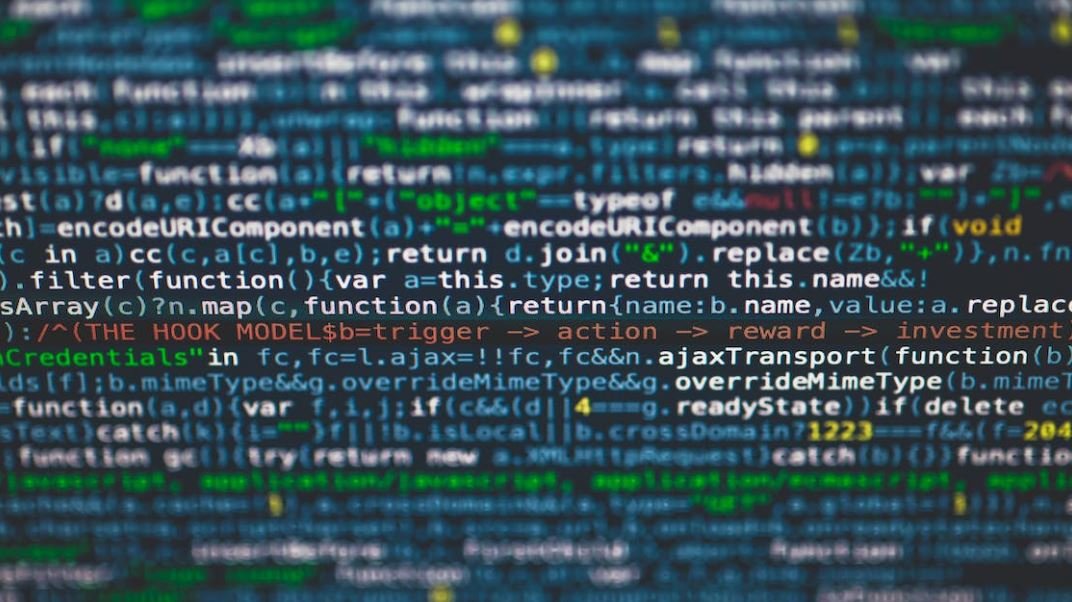Top AI Tools for Teachers
In recent years, artificial intelligence (AI) has been making its presence known in various fields, including education. AI tools for teachers offer a range of benefits, from personalized learning experiences for students to improved administrative tasks for educators. This article will explore some of the top AI tools available for teachers and how they can enhance the teaching and learning process.
Key Takeaways:
- AI tools for teachers provide personalized learning experiences.
- Administrative tasks can be automated with the help of AI.
- AI tools help educators with data analysis for better student performance.
One of the main advantages of AI tools for teachers is the ability to provide personalized learning experiences. **Using AI algorithms**, these tools can adapt to individual student needs and curate content that is most relevant and engaging for each student. This helps students stay motivated and enhances their overall learning experience.
Another area where AI tools have proven to be invaluable is in automating administrative tasks. AI-powered tools can handle tasks such as grading assignments and assessments, creating and managing schedules, and even providing feedback to students. This frees up valuable time for teachers to focus on delivering quality instruction.
AI Tools for Personalized Learning
AI tools can be used to enhance personalized learning experiences by leveraging data analysis and machine learning. These tools analyze student performance data, identify areas of improvement, and suggest tailored learning resources. For example, AI-driven tutoring platforms provide real-time feedback to students and offer guidance based on their individual strengths and weaknesses.
Below are three popular AI tools for personalized learning:
| AI Tool | Features |
|---|---|
| Smart Sparrow |
|
| Cognii |
|
| ALEKS |
|
AI Tools for Administrative Tasks
In addition to personalized learning, AI tools also assist teachers with administrative tasks, streamlining their workflow and saving time and effort. By automating routine administrative tasks, educators can focus more on their primary role as facilitators of learning. AI tools like virtual classroom assistants can help teachers manage attendance, track student progress, and even provide automated reminders and notifications to students.
Here are three AI tools that excel in automating administrative tasks:
| AI Tool | Features |
|---|---|
| Classtime |
|
| Google Classroom |
|
| Edmodo |
|
Data Analysis and Performance Tracking
AI tools can also assist educators in analyzing student data and tracking their performance to identify areas that need improvement. By leveraging machine learning algorithms, these tools can provide valuable insights and recommendations to tailor instruction and support better student outcomes. For instance, AI-driven analytics platforms can identify patterns in student behavior and provide predictions on future performance.
Some noteworthy AI tools for data analysis and performance tracking include:
- PowerSchool – Provides comprehensive student data analytics and reporting.
- Synapse – Offers personalized learning recommendations based on individual student progress and interests.
- InsightPA – Assists with student performance tracking and analysis based on state education standards.
AI tools have revolutionized the education landscape, empowering teachers with advanced capabilities to create personalized learning experiences, automate administrative tasks, and improve data analysis for better student performance. Incorporating AI tools can enhance the effectiveness and efficiency of teachers, ultimately benefiting the learning outcomes of students. Whether it’s providing adaptive learning paths or automating grading, AI tools are revolutionizing the way educators teach and students learn.

Common Misconceptions
Misconception: AI tools will replace teachers
One common misconception is that AI tools are meant to replace teachers in the classroom. However, this is far from the truth. AI tools are designed to assist and support teachers in their instructional roles, not replace them entirely.
- AI tools can provide additional resources and materials for teachers to enhance their lessons.
- AI tools can automate administrative tasks, allowing teachers to focus on more important aspects of their job.
- AI tools can provide personalized learning experiences for students, but the role of the teacher in guiding and mentoring remains crucial.
Misconception: AI tools are expensive and inaccessible
Another common misconception is that AI tools are expensive and only available to well-funded schools or institutions. While some advanced AI tools may come with a higher price tag, there are also many affordable or even free AI tools that are easily accessible.
- There are open-source AI tools that can be freely used and customized by teachers.
- Many educational technology companies offer affordable AI tool packages for schools and individual educators.
- Cloud-based AI tools can be accessed from any device with an internet connection, making them accessible to a wide range of educators.
Misconception: AI tools will replace student interaction
Some people mistakenly believe that using AI tools in the classroom will lead to a decrease in student interaction and engagement. However, AI tools can actually facilitate and enhance student interaction in various ways.
- AI tools can provide real-time feedback and interactive quizzes that actively engage students in their learning process.
- AI tools can facilitate collaborative projects by enabling students to work together on shared platforms.
- AI tools can enhance communication between students and teachers, enabling more personalized support and guidance.
Misconception: AI tools are only suitable for certain subjects
Another misconception is that AI tools are only beneficial for certain subjects such as math or science. In reality, AI tools can be applied across various disciplines to support teaching and learning.
- AI tools can analyze and provide insights on student writing in subjects like English or history.
- AI tools can offer language learning support for foreign language teachers and students.
- AI tools can assist with data analysis and visualization in subjects like social sciences or geography.
Misconception: AI tools will make teaching less creative
It is often believed that using AI tools in the classroom will limit the creativity and flexibility of teachers. However, AI tools can actually empower teachers to be more creative and innovative in their instructional approaches.
- AI tools can provide teachers with new ideas and approaches for lesson planning and content creation.
- AI tools can help teachers save time on routine tasks, freeing them up to focus on more creative aspects of teaching.
- AI tools can facilitate personalized learning experiences, allowing teachers to tailor their instruction to each student’s unique needs and interests.

Top AI Tools for Teachers
Artificial intelligence (AI) is revolutionizing the education sector by offering innovative solutions to enhance teaching and learning experiences. This article presents a comprehensive list of the top AI tools that are transforming the way teachers engage with their students. Each tool provides unique features and benefits that empower educators to create interactive and personalized learning environments. Explore the tables below for in-depth insights into these groundbreaking AI tools.
Table 1: Adaptive Learning Platforms
Adaptive learning platforms employ AI algorithms to dynamically adjust the instructional content and pace according to each student’s individual needs. This personalized approach promotes effective learning outcomes and maximizes engagement.
| AI Tool | Key Features | Examples |
|---|---|---|
| Cognii | Virtual tutor, instant assessments | AI Math Tutor, English Writing Assistant |
| Thinkster Math | Step-by-step personalized learning plans | Individualized math tutoring |
Table 2: Language Learning AI Tools
Language learning AI tools leverage speech recognition and natural language processing to offer interactive language learning experiences, enabling students to practice their communication skills in diverse languages.
| AI Tool | Key Features | Examples |
|---|---|---|
| Duolingo | Game-like lessons, personalized feedback | Language learning app |
| Rosetta Stone | Immersive learning, speech recognition | Language learning software |
Table 3: Virtual Reality (VR) Classroom Tools
Virtual Reality (VR) classroom tools facilitate immersive learning experiences that transport students to virtual environments, enabling them to explore historical sites, scientific concepts, and more, fostering engagement and understanding.
| AI Tool | Key Features | Examples |
|---|---|---|
| Google Expeditions | Virtual field trips, 360° panoramas | Exploring Ancient Egypt, Journey to the International Space Station |
| Labster | Virtual science labs, interactive simulations | Physics Lab, Biology VR Lab |
Table 4: AI-Powered Writing Tools
AI-powered writing tools assist students in enhancing their writing skills through grammar and style suggestions, plagiarism detection, and automated proofreading, promoting effective communication.
| AI Tool | Key Features | Examples |
|---|---|---|
| Grammarly | Grammar suggestions, spell check | Writing assistant, browser extension |
| Turnitin | Plagiarism detection, similarity reports | Educational plagiarism checker |
Table 5: AI-Enhanced Tutoring Systems
AI-enhanced tutoring systems provide personalized instructional support, tutoring, and feedback to students, improving their comprehension and independent learning skills.
| AI Tool | Key Features | Examples |
|---|---|---|
| SASSI | Student modeling, adaptive feedback | Advanced mathematics tutoring system |
| Smart Sparrow | Interactive lessons, guided exploration | Virtual science labs, adaptive tutorials |
Table 6: Intelligent Content Creation Tools
Intelligent content creation tools leverage AI to generate personalized educational materials, interactive quizzes, and engaging lesson plans, streamlining the teaching process and enhancing student participation.
| AI Tool | Key Features | Examples |
|---|---|---|
| Sophia | Automated lesson creation, question generation | Vast lesson library across subjects |
| Articulate Rise | Interactive course building, multimedia integration | Online course authoring tool |
Table 7: Language Translation AI Tools
Language translation AI tools assist teachers and students in overcoming language barriers by providing real-time translation and transcription services, enabling effective communication and fostering inclusivity.
| AI Tool | Key Features | Examples |
|---|---|---|
| Google Translate | Instant translation, text-to-speech | Online translation platform |
| iTranslate | Accurate translations, conversation mode | Translation app |
Table 8: AI-Assisted Grading Tools
AI-assisted grading tools automate the grading process, providing quick and objective feedback to students, reducing educators’ workload, and enhancing assessment efficiency.
| AI Tool | Key Features | Examples |
|---|---|---|
| GradeScope | Automated grading, rubric-based feedback | Online grading platform |
| WIRIS quizzes | Automatic scoring, diverse question types | Math assessment platform |
Table 9: AI-Enabled Student Assessment Tools
AI-enabled student assessment tools leverage machine learning algorithms to analyze student performance, providing reliable insights and data-driven recommendations for customized learning paths.
| AI Tool | Key Features | Examples |
|---|---|---|
| ClassIn | Real-time assessments, automated grading | Online classroom management system |
| Edulastic | Interactive assessments, data analytics | Online assessment platform |
Table 10: AI-Driven Personalized Learning Platforms
AI-driven personalized learning platforms combine adaptive instruction, data analytics, and intelligent recommendations to create customized learning experiences tailored to each student’s unique strengths, weaknesses, and learning style.
| AI Tool | Key Features | Examples |
|---|---|---|
| Knewton | Data-driven insights, adaptive learning paths | Personalized learning platform |
| DreamBox Learning | Individualized lessons, real-time progress tracking | Online math learning platform |
The integration of AI tools has significantly transformed the role of educators and the learning experiences of students. These innovative tools empower teachers to create engaging and personalized learning environments, while students benefit from individualized instruction, interactive content, and effective assessments. As we embrace the potential of AI in education, it is crucial to continually explore and adopt these groundbreaking tools to enhance learning outcomes and prepare students for the future.
Frequently Asked Questions
What are AI tools for teachers?
AI tools for teachers are technologies that utilize artificial intelligence to assist educators in various aspects of their teaching process. These tools aim to enhance classroom efficiency, personalize learning experiences, and provide valuable insights for teachers to improve their teaching strategies.
How can AI tools benefit teachers?
AI tools offer several benefits for teachers, such as automating administrative tasks, facilitating personalized learning experiences for students, providing immediate feedback on assignments, streamlining assessment processes, and offering data-driven insights into student performance.
What are some popular AI tools for teachers?
Some popular AI tools for teachers include virtual teaching assistants, smart content creation platforms, automated grading systems, adaptive learning platforms, data analytics tools, and chatbot-based tutoring platforms.
How can AI tools enhance personalized learning?
AI tools can enhance personalized learning by analyzing students’ performance data and creating tailored learning pathways based on their individual needs and abilities. These tools can adapt to students’ progress, provide customized recommendations, and offer targeted interventions to support their learning journey.
Can AI tools replace teachers?
No, AI tools cannot replace teachers. While AI tools can automate certain tasks and provide valuable insights, the presence of a qualified teacher is crucial for effective education. Teachers bring human interaction, emotional intelligence, experience, and creativity to the learning process, which AI tools cannot fully replicate.
Are AI tools safe for students?
Yes, AI tools designed for educational purposes prioritize the safety and privacy of students. Reputable AI tool providers comply with privacy regulations and employ robust security measures to protect student data. However, it is always advisable to thoroughly review the privacy policies and data handling practices of any AI tool before implementation.
How can AI tools promote inclusivity in education?
AI tools can promote inclusivity in education by providing personalized support to students with different learning styles, abilities, and backgrounds. These tools can adapt to individual needs, recommend supplementary materials, offer language translation, provide visual aids, and assist with accessibility features to ensure equal learning opportunities for all students.
Are AI tools user-friendly for teachers with limited tech skills?
Many AI tools strive to be user-friendly, even for teachers with limited tech skills. Providers often offer user-friendly interfaces, intuitive workflows, comprehensive tutorials, and customer support to assist teachers in utilizing the tools effectively. It is advisable to choose AI tools that prioritize ease of use and provide sufficient training resources.
How can AI tools support formative assessments?
AI tools can support formative assessments by automatically grading assignments, providing real-time feedback to students, and generating detailed performance reports. These tools can analyze students’ strengths and weaknesses, identify areas requiring improvement, and help teachers fine-tune their instructional strategies based on actionable insights.
How do I choose the right AI tool for my teaching needs?
Choosing the right AI tool depends on your specific teaching needs and goals. Consider factors such as the tool’s features, compatibility with your existing teaching methods, user-friendliness, reliability, cost, privacy policies, integration capabilities, and customer support. It is advisable to research and compare multiple options before selecting an AI tool for your classroom.




